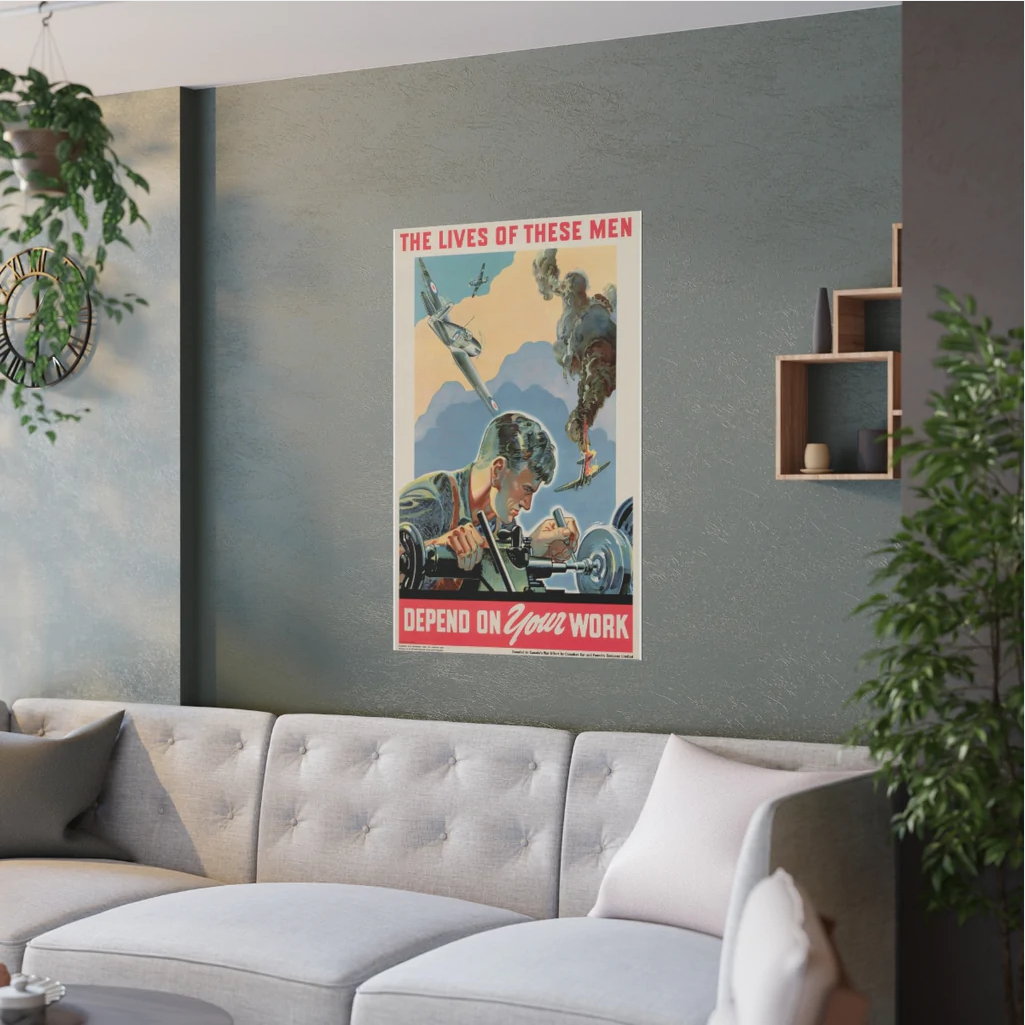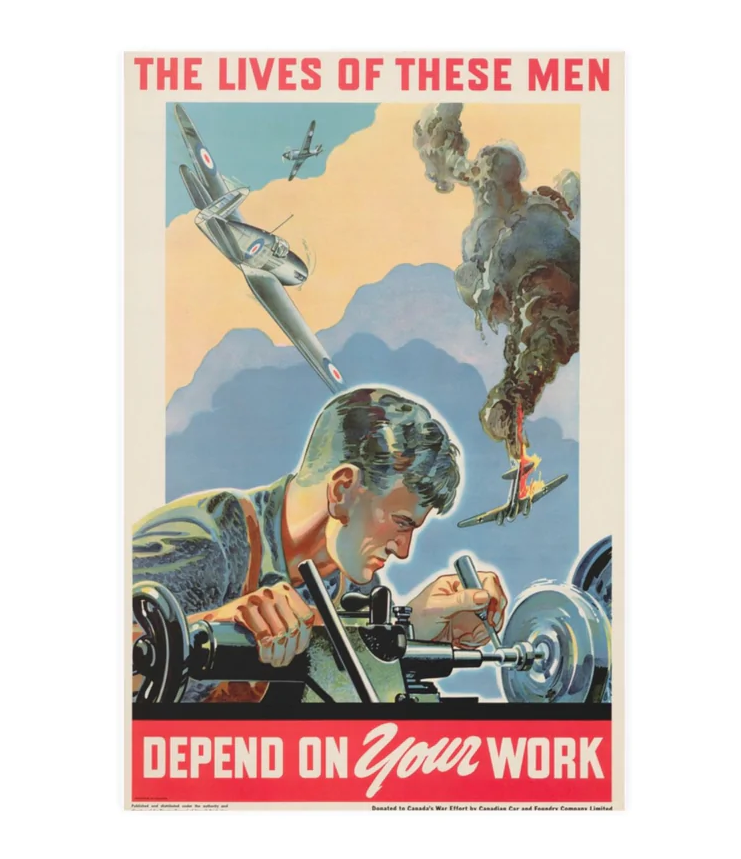The Home War Establishment
During the Second World War, the majority of the Royal Canadian Air Force’s (RCAF) effort was spent overseas. Canadian aviators and ground crew served throughout the world, especially in Bomber, Fighter, and Coastal Commands based out of Britain and in the various squadrons that fought in Europe.
Despite this focus, the RCAF still needed to defend Canada’s airspace and coasts. A total of fifty-one RCAF squadrons served in North America during the Second World War. Many of these squadrons were part of the antisubmarine campaign in the North Atlantic, while others protected Canada’s west coast and Alaska. Both fighter and maritime patrol squadrons flew in the Aleutians campaign of 1942-1943.
The Home War Establishment was responsible for the air defence of Canada during the war. It was split into two different commands, Eastern Air Command (EAC) and Western Air Command (WAC).
DEFENDING CANADA FROM THE AIR

EASTERN AIR COMMAND
Eastern Air Command was established on the 15th of September 1938. It was headquartered in Halifax, Nova Scotia. The EAC was tasked with coordinating air defence in Canada’s Atlantic region, which required close cooperation with the Royal Canadian Navy. The EAC’s area of protection included Eastern Quebec, Newfoundland and Labrador, still a British colony and not yet part of Canada, New Brunswick, Nova Scotia, and Prince Edward Island. A network of air force bases was created in the lead up to war. They were located at Halifax, Dartmouth, Yarmouth, Sydney in Nova Scotia. Bagotville in Quebec and eventually at Gander and Torbay in Newfoundland. Flying boat bases were built in Gaspé, Quebec; Shelburne, Nova Scotia; and Botwood, Newfoundland.
The RCAF’s work on the east coast began early in September 1939 as convoys began to depart for Britain. Initially the convoys could only be protected up to a certain distance into the Atlantic due to aircraft limitations. As the war progressed, and the range of aircraft increased, better and longer-range protection was offered to the convoys leaving and entering Canada. The EAC also coordinated anti-submarine patrols in the Atlantic.
There was one location away from Canada’s east coast that came under the EAC’s command. RCAF Station Bagotville was established, along with RCAF Station Mont-Joli, to counter the U-boat threat in the St. Lawrence River and to placate fears of German attacks among the local population. A Hawker Hurricane squadron was posted permanently at Bagotville to protect the nearby Arvida aluminium production facilities, as aluminium was vital for the Allied war effort.
WESTERN AIR COMMAND
The RCAF’s Western Air Command was established on the 1st of March 1938. Headquartered in Vancouver, British Columbia, it was primarily tasked with defending Canada’s west coast. Aerodromes and flying boat bases were built across British Columbia including at Patricia Bay, Ucluelet, Tofino, Coal Harbour, and Port Hardy on Vancouver Island. Airfields were built in more remote areas at Bella Coola, Prince Rupert, and Alliford Bay on the Queen Charlotte Islands.
After the Japanese attack on Pearl Harbor in December 1941, Canada’s west coast needed to be better protected. More squadrons were created and placed on the west coast at places like Annette Island and Sea Island. In June 1942 in response to the Japanese attack on the Aleutians, No. 8 and No. 111 Squadrons RCAF were transferred to the Nome and Umnak Islands to support the American Army Air Force. Squadron Leader K.A. Boomer, commander of No. 111 Squadron, shot down a Rufe fighters, a Zero converted into hydroplane.
By 1943, No. 4 Group, headquartered in Prince Rupert, British Columbia was assigned to protect the northern sector of WAC’s territory. No 2 Group, headquartered in Vancouver oversaw the southern sector.
The resources given to the WAC far outstripped the actual threats posed by enemy forces to Canada’s west coast. After the Japanese had been forced out of the Aleutians, Western Air Command focused more on mobility and speed of tactical response to any potential attack. However, no attacks ever came.
RADAR STATIONS
To help in the defence of Canada’s skies, numerous radar stations, initially called “radio direction finding” in Canada, were set up across the country. These stations were put into place to detect enemy aircraft approaching Canada’s coasts and allow timely responses to aerial threats.
Most of these stations were on Canada’s coasts and along the St. Lawrence River. Twenty-nine radar stations were built in the Atlantic provinces, Quebec, and in Newfoundland and Labrador. All eleven stations on the west coast were in British Columbia. The only non-coastal radar station was placed at Bagotville to aid in the protection of the nearby Arvida aluminium production facilities.
COAST WATCH UNITS
The No.1 Coast Watch Unit RCAF was established in 1942 after the Japanese attack at Pearl Harbour. All the detachments were on the western coast of the Queen Charlotte Islands and provided visual surveillance until there was sufficient radar coverage. These detachments were very remote and in austere locations. Each detachment had one woodsmen, one man who could cook, and two radio operators. In 1943 the establishment of radar stations made it possible to withdraw the Coast Watch Units.
END OF HOME WAR ESTABLISHMENT
By 1943, the war had turned in favour of the Allies. This shift allowed more and more RCAF squadrons and resources based in Canada to be transferred overseas. There was less and less need to protect Canada’s coastal air space. Soon after Germany’s surrender in May 1945, members of the RCAF were gradually demobilized. On the 15th of September 1945, Eastern and Western Commands no longer had people on active duty.
Support the project:
How can you support the project:
Buy a map today!
We sell many authentic posters from the Second World War.These are high resolution scans of original posters that you can only find in the archives.
Each poster is printed on high quality paper ready for mounting in a frame for your office or living room.
The best part of buying a poster? 100% of proceeds are directed back to the project allowing us to continue to map out the Second World War.



Other ways to support the project:
Donate
You can help us tell the story of Canadian soldiers by donating today!
Our team is dedicated to keeping the story of Canada in the Second World War at the forefront using interactive technology that makes history open and accessible.
With your donation you help us to keep mapping and digitizing war diaries so we can continue to tell the story of those who served and those who fell.
Join Patreon
Do you want to become part of the team? Consider joining Patreon!
As a member of Patreon you can influence our project, what we are working on, and can even direct message our team. As a Patreon you can even get discounts to our entire store!
With your membership you can show your commitment to the project by helping us every month. And the best part is, every Patreon dollar goes directly to the web map!




















